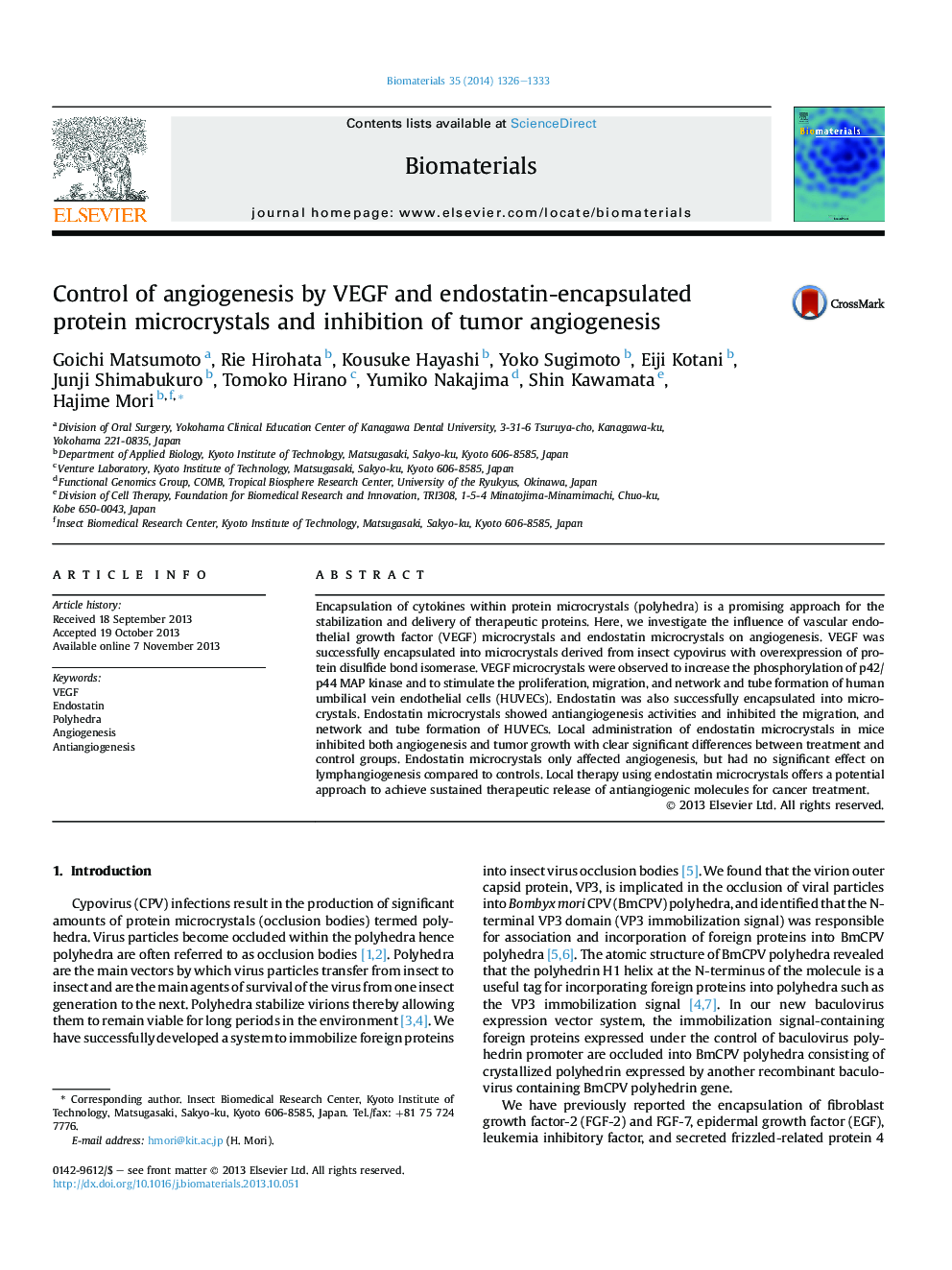| Article ID | Journal | Published Year | Pages | File Type |
|---|---|---|---|---|
| 10228611 | Biomaterials | 2014 | 8 Pages |
Abstract
Encapsulation of cytokines within protein microcrystals (polyhedra) is a promising approach for the stabilization and delivery of therapeutic proteins. Here, we investigate the influence of vascular endothelial growth factor (VEGF) microcrystals and endostatin microcrystals on angiogenesis. VEGF was successfully encapsulated into microcrystals derived from insect cypovirus with overexpression of protein disulfide bond isomerase. VEGF microcrystals were observed to increase the phosphorylation of p42/p44 MAP kinase and to stimulate the proliferation, migration, and network and tube formation of human umbilical vein endothelial cells (HUVECs). Endostatin was also successfully encapsulated into microcrystals. Endostatin microcrystals showed antiangiogenesis activities and inhibited the migration, and network and tube formation of HUVECs. Local administration of endostatin microcrystals in mice inhibited both angiogenesis and tumor growth with clear significant differences between treatment and control groups. Endostatin microcrystals only affected angiogenesis, but had no significant effect on lymphangiogenesis compared to controls. Local therapy using endostatin microcrystals offers a potential approach to achieve sustained therapeutic release of antiangiogenic molecules for cancer treatment.
Related Topics
Physical Sciences and Engineering
Chemical Engineering
Bioengineering
Authors
Goichi Matsumoto, Rie Hirohata, Kousuke Hayashi, Yoko Sugimoto, Eiji Kotani, Junji Shimabukuro, Tomoko Hirano, Yumiko Nakajima, Shin Kawamata, Hajime Mori,
